Marché Gwangjang (Boutiques de Hanbok) (광장시장 한복매장)
10.2Km 2019-09-16
88, Changgyeonggung-ro, Jongno-gu, Seoul-si
+82-2-2267-0291
Contrairement à d'autres marchés du genre, celui de Gwangjang a réussi à préserver sa riche histoire et à maintenir son côté traditionnel, refutant toute modernisation. Tenu par des marchands au bon coeur incarnant la générosité du peuple coréen, le marché est un excellent endroit pour déguster de délicieux plats et acheter des produits variés pas chers.
br>
Ses boutiques de hanboks sont spécialisées dans les hanboks traditionnels plutôt que dans les modernes, que l'on pense plus pratiques que leurs homologues traditionnels. De superbes tenues sont disponibles à -30% par rapport aux prix demandés.
Eunjujeong (은주정)
10.2Km 2021-03-24
32, Changgyeonggung-ro 8-gil, Jung-gu, Seoul
+82-2-2265-4669
It is a place where you can eat kimchi stew with ssam (wraps). This restaurant's signature menu is kimchi stew. This Korean dishes restaurant is located in Jung-gu, Seoul.
The Shilla Duty Free (Séoul) (신라면세점-서울점)
10.2Km 2021-05-12
249, Dongho-ro, Jung-gu, Seoul-si
+82-1688-1110
La boutique détaxée de l’hôtel Shilla se situe au sein de l’hôtel .
Il comprend environ 500 articles tel que du parfum, des produits de cosmétique, des sacs, des montres, des bijoux et bien plus encore.
La boutique a son propre site web que vous pouvez consulter sur (www.dfskorea.com) avec une présentation des différentes marques et des informations en plusieurs langues étrangères.
Parc de Jamwon Hangang (잠원한강공원)
10.2Km 2025-04-30
221-124, Jamwon-ro, Seocho-gu, Seoul-si
+82-2-3780-0531
Le parc de Jamwon Hangang est situé sur la rive sud du fleuve s’étendant du pont Yeongdong jusqu’aux ponts Dongho, Hannam et Banpo. La longueur totale est de 5,4 km adjacente à Gangnam-gu et Seocho-gu où les endroits les plus animés de Gangnam tels que Apgujeong-dong, Sinsa-dong et Jamwon-dong sont situés.
La berge du parc possède des installations sportives (pistes d’athlétisme, terrain de football, court de volley-ball, piscine, court de tennis et gymnase). De plus, il y a une piste cyclable parfaite le long de la berge où vous pourrez profiter du sompteux paysage qu’offre le fleuve Hangang tout en faisant du vélo.
Qui plus est, il y a aussi un terrain de découverte de la nature sur les vers à soie, les fleurs et les papillons. L’été, l’on vient souvent pour profiter des sports aquatiques d’été excitants tels que la natation, le windsurf et le canot automobile.
Piscines en plein air au parc de Hangang - Jamwon (한강시민공원 잠원수영장)
10.2Km 2020-11-04
221-124, Jamwon-ro, Seocho-gu, Seoul
Le parc de la rivière Hangang a ouvert six piscines en plein air, dont une dans le parc Hangang de Yeouido. La qualité de l’eau y est méticuleusement contrôlée et elles sont non seulement sans danger mais aussi bon marché par rapport aux piscines privées. Leurs équipements permettent de louer du matériel de natation et d’acheter de la nourriture et des boissons.
Palais Changgyeonggung (창경궁)
10.2Km 2025-03-07
185, Changgyeonggung-ro, Jongno-gu, Seoul-si
+82-2-762-4868
Situé au centre de Séoul, le palais Changgyeonggung a été construit en tant que palais Suganggung par le 4ème roi de la dynastie Joseon, le roi Sejong (r.1418-1450), en faveur de son père retiré du pouvoir, le roi Taejong. Le palais a souvent servi de lieu de résidence pour les reines et les concubines. Durant le règne du roi Seongjong (1469-1494), le palais fut rénové et renommé en palais Changgyeonggung. Le palais a ensuite accueilli un zoo et un parc botanique durant la période de l'impérialisme japonais. Le site est resté tel quel jusqu'en 1983 avant que des travaux de rénovation furent entrepris pour restaurer l'aspect noble et originel du palais.
Parc Samcheong (삼청공원)
10.2Km 2020-06-09
134-3, Bukchon-ro, Jongno-gu, Seoul
+82-2-2148-4150
Situé à la périphérie du Mont Bugak, ce parc fut le premier en Corée à être officiellement désigné par cette appellation. Le nom de Samcheong (« Les Trois Bleus ») fait référence aux trois idéaux dans le Taoïsme que les hommes peuvent atteindre. Entouré de cerisiers plantés il y a fort longtemps, le parc fourmille de touristes tous les mois d’avril lorsqu’ils sont en pleine floraison. Le parc propose de nombreuses installations : des courts de tennis et de badminton, une aire de jeux, un snack, et une aire de repos polyvalente.
La principale piste de randonnée à travers le Parc Samcheong connecte ce dernier à celle des Murs de la Forteresse de Séoul du Mont Bugak, source d’eau minérale à Seongbuk-dong, et Waryong. Pendant la randonnée, vous tomberez sur Malbawi, un excellent endroit choisi par la Municipalité de Séoul d’où vous pourrez avoir une vue d’ensemble sur la ville. Le Programme de Visite du Site Historique Malbawi, géré par l’Office de Jongno-go, fournit aux enfants et aux adultes l’opportunité d’apprendre sur l’écologie naturelle du Parc Samcheong et sur l’histoire des Murs de la Forteresse de Séoul grâce à des guides désignés. A travers les routes développées dans Samcheong-dong, vous pourrez facilement jusqu’à Seongbuk-dong. En ce moment, le Tunnel Samcheong près du parc relie les deux localités.
CJ Food World (CJ 푸드월드)
10.3Km 2017-11-24
330, Dongho-ro, Jung-gu, Seoul-si
+82-1577-9622
CJ Foodworld au centre CJ Cheil Jedang au centre de Séoul est le premier magasin phare de l’industrie alimentaire. Il est destiné à refléter l’histoire de l’industrie du géant CJ Group, ainsi qu’à présenter les opportunités pour les futures générations. En tant que tel, il présente le CJ The Farm (la ferme CJ) où des cultures de riz et de haricots poussent et son traités, et 17 commerces de nourriture et de restauration, possédés par le groupe CJ , au premier étage inférieur. En plus de la restauration, il y a de nombreuses opportunités de shopping, de cuisine et de visite à CJ Foodworld.
Travelodge Dongdaemun (트레블로지 동대문 호텔)
10.3Km 2021-07-13
359, Dongho-ro, Jung-gu, Seoul
+82-2-2160-8888
Travelodge Dongdaemun is located in the heart of Seoul, surrounded by popular tourist attrctions. The hotel provides services that suit the needs of both leisure and business travelers alike at an affordable price. Dongdaemun is a popular fashion district where tradition and modern cultures meet. Several tourist attractions are located within 10 to 15 minutes via public transportation from the hotel, such as Dongdaemun Design Plaza, Cheonggyecheon Stream, Heunginjimun Gate, Insa-dong and the royal palaces.
Marché de Gwangjang (광장시장)
10.3Km 2024-05-17
88, Changgyeonggung-ro, Jongno-gu, Seoul-si
+82-2-2267-0291
En 1904, la 41ème année du règne du roi Gojong, après le traité d'Eulsa, le Japon s'empare du pouvoir politique de la Corée. Le Japon s'empare des droits de direction du marché Namdaemun en mettant en place une politique d'invasion économique. Une solution économique pour la Corée est nécessaire et donc le marché Gwangjang est créé en 1905.
Au début, les biens vendus sur le marché étaient des biens primitifs, des produits agricoles et de la mer, des bois de chauffages, etc, importés en charrettes en petites quantités de Gapyeong, Icheon, Choelwon, etc. Aujourd'hui, 100 ans après son ouverture, le marché propose un très grand nombre de produits comme la soie, les étoffes (hanboks), les tissus (costume), les vêtements pour femmes, les rideaux, les literies, les objets lacrés et nacrés, les ustensiles de cuisine, les produits importés, les légumes et les fruits, les poissons séchés, les produits pour des cérémonies traditionnelles, les poissons, la viande, les légumes, etc.
La zone des restaurants qui se trouve à l'intersection de la porte Est, de la porte Nord 2 et de la porte Sud 1 est la zone la plus déveolppée du marché. Des personnes de tout âge (les mères, les étudiants, les séniors, etc) visitent le marché.
Ayant été désigné comme un des sites touristiques représentatifs du pays, il est visité par de nombreux touristes étrangers.
Le marché Gwangjang est considéré comme le tout premier marché permanent à avoir vu le jour en Corée et continue à être une destination touristique prisée. Le deuxième étage du marché propose notamment de la literie.
Le marché est aussi réputé pour la qualité de ses produits et les bas prix qu'il propose tout au long de l'année.
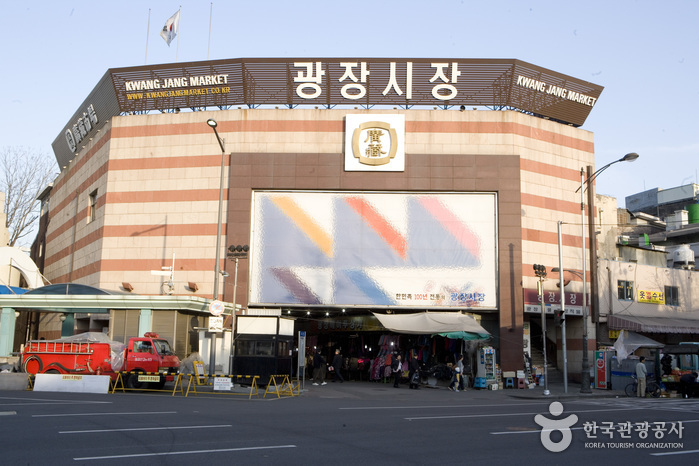
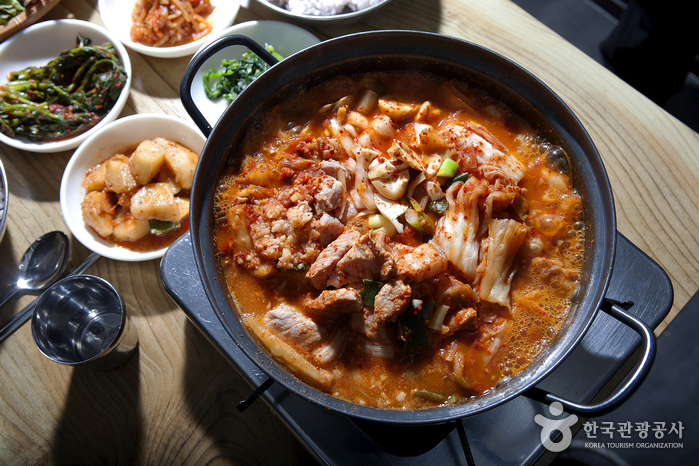

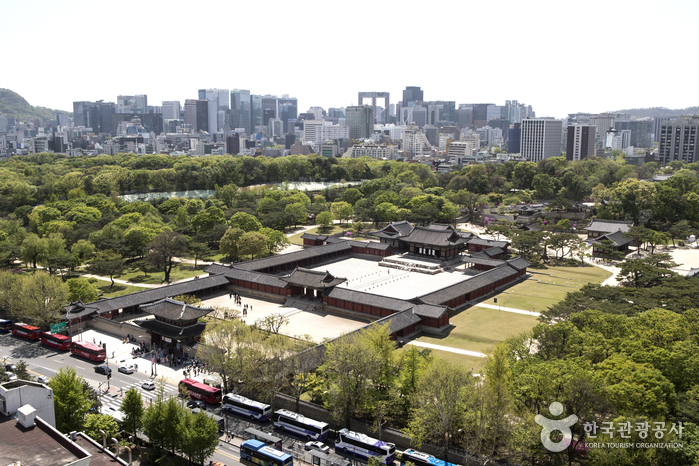
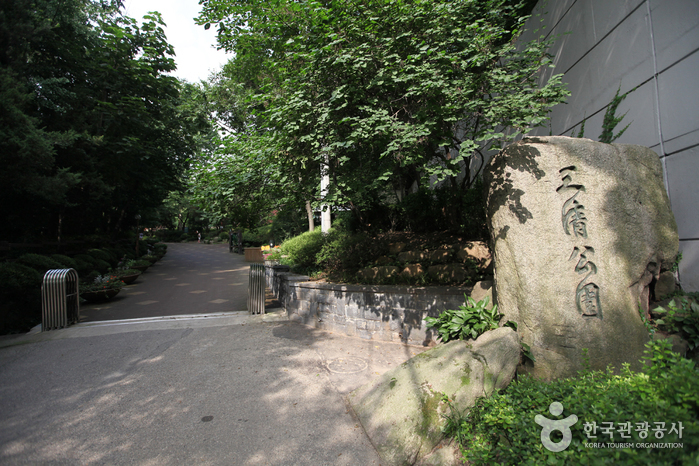
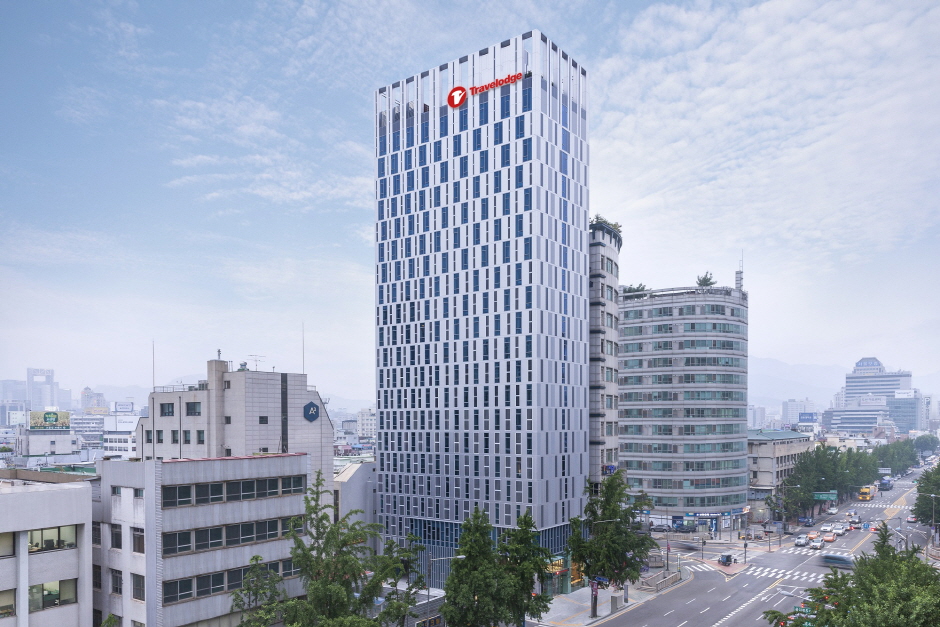
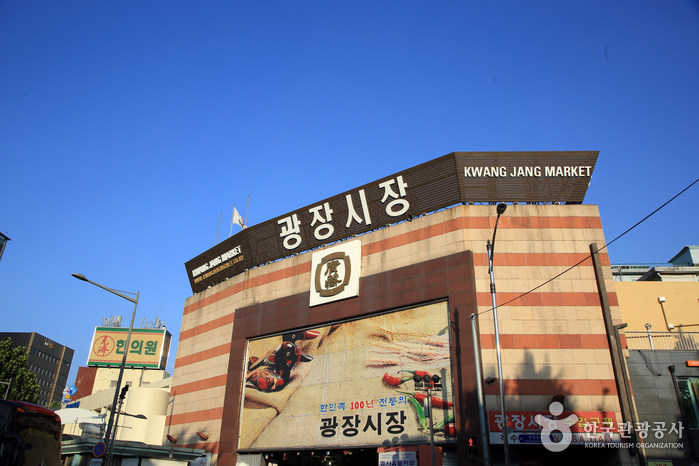
 Français
Français
 한국어
한국어 English
English 日本語
日本語 中文(简体)
中文(简体) Deutsch
Deutsch Español
Español Русский
Русский